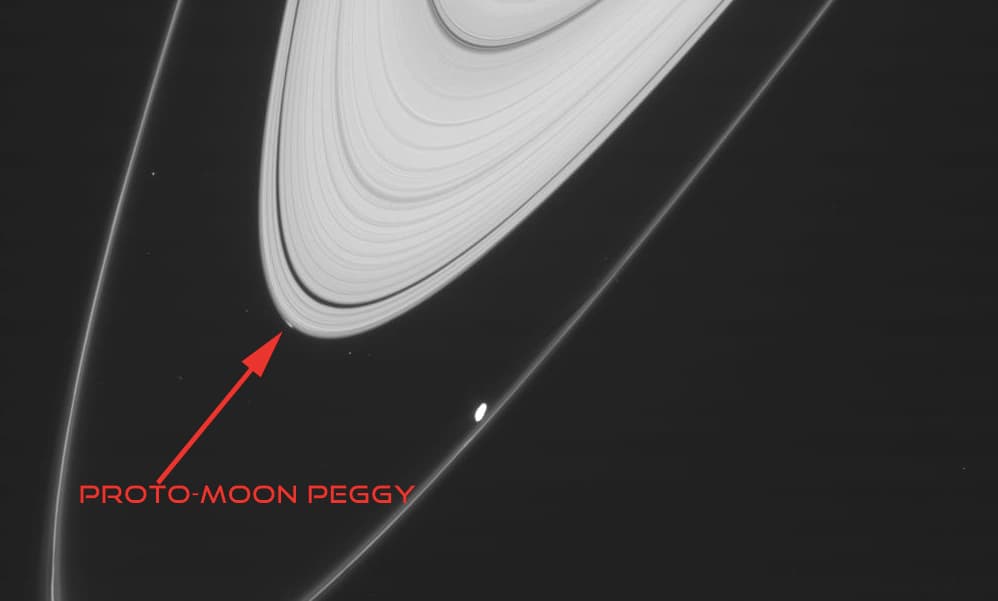
The smudge near what looks like the tip of that ring A was caused by Peggy. We can also see the shepherd moon Prometheus. (Original Image: NASA/JPL/Space Science Institute)
Exactly one year ago, astronomer Carl Murray a scientist from Queen Mary University of London discovered a curious disturbance in the A ring of Saturn. Analysing the data of the Cassini probe which was keeping an eye on the moon Prometheus (the bright white dot in the picture), Murray noticed that the distortions of the ring have been present for several months and that they looked like airplane trails. These facts indicate that the curious phenomenon was actually produced by an object (estimated no bigger than a kilometre), and Murray nicknamed it Peggy in honour of his mother-in-law.
The exact nature of Peggy is unclear. Saturn shows several examples of shepherd moons, moons that inhabit the edges and the gaps between rings and helping maintaining the sharp edges of the rings with their gravity. Peggy is too small to be such a moon, but it might be a moon in the making. According to a paper by Crida & Charnoz[1], planetary rings are ideal moon nurseries with materials beyond the Roche limit coalescing into sizeable satellites.
On the other hand Peggy might be just a transient feature. A conglomerate of rocks and ice that joined together for a while and it will soon break up. Dust to dust, after all.
No matter its destiny, Peggy taught us something new about the Saturn rings. Which bears the question: should it be really called Peggy?
References
Formation of Regular Satellites from Ancient Massive Rings in the Solar System A. Crida, S. Charnoz Science, Vol. 338 no. 6111 pp. 1196-1199 http://www.sciencemag.org/content/338/6111/1196

